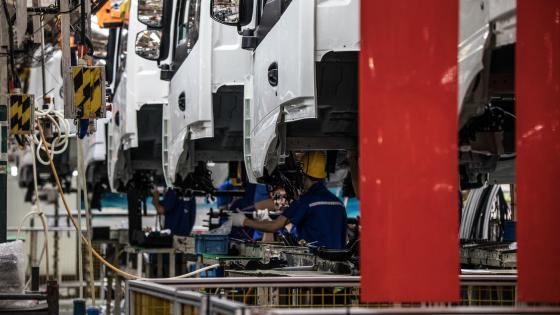China’s surging exports and its exchange rate have elicited consternation from economists, politicians, and pundits. How would a stronger renminbi affect China’s exports and its trade surplus? China’s entire surplus is in a customs regime called processing trade. Imports for processing are intermediate inputs that are imported duty-free to produce final goods for re-export.
Pilling (2011) argues that the renminbi is not important for China’s exports because “[m]any items supposedly made in China are just assembled in China….Most of the manufacturing cost comprises high-precision components made not in low-wage economies, but in high-wage ones such as Japan and South Korea”. UNCTAD (2011) and the WTO (2011) make similar points.
Arguments such as these, however, may not be relevant for China today. This can be seen by disaggregating China’s processing trade into its two main categories:
- Processing and assembly trade; and
- Processing with imported materials trade.
As Gaulier et al (2005) discuss, the first category refers to foreign suppliers importing intermediate goods that belong to them and using these inputs to produce goods for re-export. The second category refers to foreign suppliers importing inputs from other firms and using these to produce goods for re-export. If following Tong and Zheng (2008) we measure value-added in processing trade as the difference between processed exports and imports for processing,
- Figure 1 shows that China’s value-added in the ‘processing-and-assembly category’ is small;
- Figure 2 shows that China’s value-added in the ‘processing with imported materials’ category is now large.
Figure 1. Value of China’s processing-and-assembly exports and imports, 1993–2011
Source: CEIC Database.
Note: Values for 2011 are estimates based on data for the first 8 months of 2011.
Figure 2. Value of China’s processing-with-imported-materials exports and imports, 1993–2011
Source: CEIC Database.
Note: Values for 2011 are estimates based on data for the first 8 months of 2011.
The first thus corresponds to Pilling’s (2011) description whereas the second does not.
Koopman et al (2008) note that the effect of exchange-rate changes in processing countries on trade volumes should depend on the share of domestic content in exports. One would thus expect the renminbi to have a small or negligible effect on ‘processing-and-assembly’ exports and a large effect on ‘processing-with-imported-materials’ exports. On the other hand, one would expect exchange rates in supply chain countries to affect both categories since in both cases much of the value-added comes from imported parts and components.
To test whether this is so, we can extend the work of Unteroberdoerster et al (2011) and my previous research, Thorbecke (2011). These studies construct integrated exchange rates to measure how exchange rates affect the relative foreign currency cost not just of China’s value-added in processing trade but of China’s entire output of processed exports. The integrated exchange rate is a weighted average of the renminbi exchange rate and the exchange rates in supply chain countries, with weights determined by the proportion of the value-added coming from China and from supply chain countries.
We can estimate the effect of exchange-rate changes on processing-and-assembly and processing-with-imported-material exports separately. While both types of exports should be affected by exchange rates in supply chain countries and thus by integrated exchange rates, processing-with-imported-materials exports should be affected much more than processing-and-assembly exports by changes in the renminbi.
Some empirical results
The results suggest that appreciations of the integrated exchange rate cause large drops in both processing-and-assembly and processing-with-imported-materials exports (see Thorbecke 2012 for details). In the case of processing-and-assembly exports, this response is driven entirely by exchange-rate changes in supply chain countries. In the case of processing-with-imported-materials exports, this response is caused both by changes in the renminbi and by changes in suppliers’ exchange rates. Changes in the renminbi also have a larger effect than changes in suppliers’ exchange rates on processing-with-imported-materials exports. Because processing-with-imported-materials exports are now six times the value of processing-and-assembly exports, these results indicate that the renminbi matters for aggregate processed exports.
Policy implications
Since exchange rates in both China and East Asian supply-chain countries affect processing trade, it is puzzling that there is so little discussion between policymakers in the region on exchange-rate issues. This lack of official interaction contrasts with the intensive private-sector integration occurring within regional production networks. A useful first step would be for East Asian government officials to begin a dialogue on exchange-rate issues. This discussion could be undertaken by specialists behind closed doors. Hopefully these behind-the-scenes interactions could point to opportunities for mutually beneficial cooperation on exchange-rate issues.
References
Gaulier, G, F Lemoine, and D Unal-Kesenci (2005), “China’s Integration in East Asia: Production Sharing, FDI, and High-tech Trade”, CEPII Working Paper No. 2005-09.
Koopman, R, Z Wang, and S-J Wei (2008), “How Much of Chinese Exports is Really Made in China? Assessing Domestic Value-Added When Processing Trade is Pervasive”, NBER Working Paper 14109.
Pilling, D (2011), “Why Americans Should Love to Learn the Renminbi”, Financial Times 12 October.
Thorbecke, W (2012), “Investigating China’s Disaggregated Processed Exports: Evidence that the Renminbi Matters”, RIETI Discussion Paper 12-E-03.
Thorbecke, W (2011), “Investigating the Effect of Exchange Rate Changes on China’s Processed Exports”, Journal of the Japanese and International Economies,25(2):33-46.
Tong, S and Y Zheng (2008),“China'sTrade Acceleration and the Deepening of an East Asian Regional Production Network”, China and World Economy, 16(1):66-81.
Unteroberdoerster, O, A Mohommad, and J Vichyanond (2011), “Implication of Asia’s Regional Supply Chain for Rebalancing Growth”, IMF Regional Economic Outlook: Asia and Pacific, April. Washington DC: International Monetary Fund.
UNCTAD (2011), Background Note on Processing Trade and its Implication for
Global Imbalances. Geneva: UN Conference on Trade and Development.
WTO (2011), Measuring Trade in Value-Added and its Implications for Understanding Global Imbalances. Geneva: World Trade Organization.




